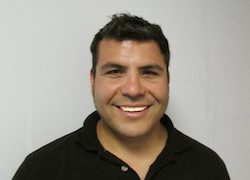Reference designs are a proof of platform concept that target specific applications, and are utilised to reduce the time-to-market in a project. A successful reference design gives the vendor a better chance for its products to get selected by an OEM and saves OEM design time by using the vendorʼs expertise in electronic design. This interview discusses how to create a successful reference design.
Dilin Anand and Sneha Ambastha talk to Joseph Chiam, country manager and Miguel Mendoza, product marketing manager about Micrel and its reference design strategy. Read on to find Micrel’s contribution towards these applications, as we discuss it in the Micrel showplace at an industry expo in Delhi.

Q. We noticed that this time you are focusing more on systems and applications, rather than a catalog of components. What happened?
A. A lot of research is required to understand the markets that are growing and where our products fit in within those application requirements. We have been working on a monolithic device for MOSFET drivers, but along with that, we also bring in many other micro technologies such as LDO, switching regulators, RF with receivers and transmitters or the transceivers in the application. Thus, there is a lot of synergy going on with the micro content. The legacy was with working into the catalog form, and now we have evolved and are looking into doing it in a system solution form.

Q. How do you start to go about doing this?
A. We are looking into specific applications and trying to bring in as much technology as possible, that is more than just the ICs and the components. For example, now that there is a lot of motivation through consumers in the green initiative to make household appliances more efficient, we are making a 3 phase motor driver that fits in the ceiling fan application. This solution can decrease the power usage of a motor from 80W AC motor to a mere 20W. This enables the designer to attain extreme power savings with minimum increase in costs. The main aim of the market is to move the customers from AC motors to 3 phase because it would help them get their money back sooner than they can think of.
Q. What do you term as the ‘Dead time’ in the motor drivers?
A. In a MOSFET half bridge topology, the dead time is the time needed to allow one High Side MOSFET to turn off before the Bottom Side MOSFET to turn on and visa versa, in order to protect against cross-connection. Typically, motor engineers increase the dead time from 500ns to 4us to protect against cross conduction, this reduces the power efficiency dramatically during the dead time. Micrel has recently released MIC4605, Half Bridge MOSFET driver, that offers adaptive dead time circuitry that automatically adjust the dead time to protect against cross conduction and reduces the dead time to as low as 6ns improving the power efficiency.
Q. We recently published a motor driver video showing a reference design, ‘starring Miguel’. What is important to ensure a successful reference design?
A. (Laughs). It takes a lot of our resources to do a reference design. The reference designs for the BLDC fan or the motor controller took us six months to complete. Our partnership with Zilog has helped us get through the firmware control loop obstacle. Once the reference design is generated for the hardware circuitry, the same hardware can be reused again and again. So the first reference design would probably take you longer because you are designing the initial design from scratch, which is fun for engineers but very time consuming, but as soon as you have it, you can reuse the same hardware into other applications. For example, if you see the demo of the motor drive, you would see an offline block which can power the motor and active circuitry, this offline can also be used to power LED circuitry or anything that requires a DC voltage. We made it universal so that the device can work with 110V or 220V AC lines. So the idea is to drive any DC block which builds up our strengths.
Q. What helps you speed up the design process for creating these reference designs, without affecting functionality?
A. Our reference design is centered around real customer applications and not just demo board that shows our product performance and features. We are application centric with our new reference designs. For example, connectivity is what our customers would like to implement in their application. If we add solid state to any application, any analog applications, we would be able to add different features, control, and fault management which would not be possible in a simple AC motor. Using our RF devices, we are able to control motor speed and direction to a handheld remote. This can also be the link that allows a gateway to control the motor via web based application or mobile device.
Understanding our customer’s requirements allows us to hit customersʼ expectations. A lot of input comes from the sales team that helps us to see where we fit in and where we can merge our technology.
Q. What is the important point to note while creating a reference design?
A. I think the reference design and the product portfolio should be in line and that is what drives the synergy, because we design these reference designs specifically for the motor drives. You got to have both the technology and the reference designs that make sense to the target audience. We initially began to generate reference designs a few years back when we started the Indian market trying to do something for the automotive sector. It was pretty much difficult because we were on the rising end. We removed the antenna from the PCB to give it more precision and stability for RF. Some of our customers found inductors really expensive in India so we designed PCB for inductors with almost zero or no cost because it is on the PCB itself. So providing better performance even after removing unwanted parts at a premium price interests the customer so the customer centric approach really helps.
Now we are focusing in the FAN market enabling our customers to move to more power efficient BLDC motors.










